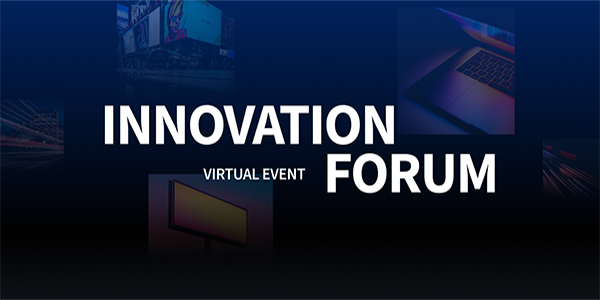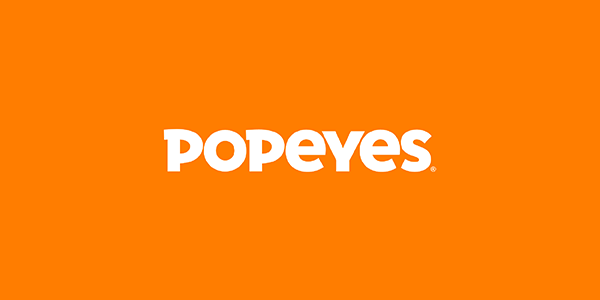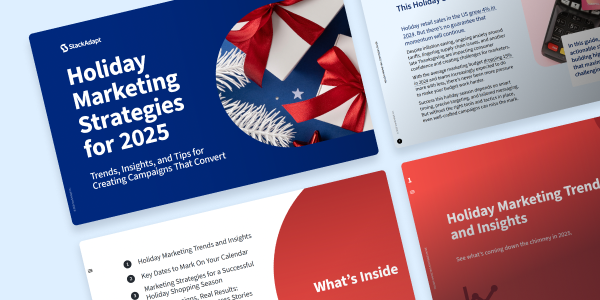The AI Advertising Podcast: S1
Episode 4
AI vs. Humans: Is AI Taking Over Advertising?

About This Podcast
Is AI replacing marketers and creatives, or is it simply a tool to enhance their work? As AI continues to automate tasks in advertising, the question remains: who’s really in control?
Yang Han | CTO, StackAdapt
David Wells | Industry Principal, Snowflake
Transcript
Diego Pineda (00:00:00)
Is AI taking over advertising? Will machines replace creative teams, media buyers, and strategists? Depending on who you ask, you might hear wildly different answers. Some say AI is automating everything—that soon, it will generate entire campaigns without human input. Others believe that AI is just a tool—powerful, yes, but still dependent on human creativity, intuition, and strategic thinking. So what’s the truth?
Today, we’re pulling back the curtain on AI’s role in advertising—where it excels, where it struggles, and whether humans are still in the driver’s seat. To help us break it down, we’ve brought in Yang Han, CTO at StackAdapt, who explains why AI is designed to assist, not replace. For now at least. You’ll also hear from previous guests like David Wells, Randy Newman, James Targett, and Te’Shawn Dwyer. Let’s dive in.
Podcast Intro (00:01:04)
Welcome to the AI Advertising Podcast, brought to you by StackAdapt. I’m your host, Diego Pineda. Get ready to dive into AI, Ads, and Aha moments.
Diego Pineda (00:01:18)
When people think of AI, they picture robots replacing humans—but in its current state, AI isn’t ready to take over marketing teams. Its best use is to automate tedious tasks so humans can focus on higher-value work. Yang Han puts it simply.
Yang Han (00:01:38)
There’s a lot of different areas in which you can use AI for advertising, obviously ensuring that you’re reaching the right KPI goals that you’re buying on, you know, brand safe traffic, you’re using the right targeting strategies. But If we think about the vision, I mean the goal of AI is to take as much away as possible for the human to automate their work, to make their life easier, right? To mimic the human as much as possible. That’s what the goal of AI is, right?
Currently, humans are needed to guide AI, to tell AI what to do, right? To say we want to, we should be reaching this goal, that we should be targeting these relevant users. AI can do a lot of the rest under direction. But I’d say this is more of a consequence of the current state of things today. AI is not at this moment, smart enough to do all this stuff for you, but I’d say, it is getting there. And I think, overall marketers would want to be comfortable, having AI do more for them, but also be understanding of the limitations of AI. It’s not like we want the human to be there as much as possible, but it’s because in certain cases, the humans should be there to make sure that AI is being utilized effectively in certain cases. But over time, you want to be comfortable and find tools that can do more and more effectively, and to be able to test those tools.
Especially as you bring in more first-party data. For example, is very effective in letting AI learn what’s already successful so it can mimic it. So, if AI can understand what works already, it can be able to copy it. But otherwise there’s just too many options for the AI to start. You have the code start problem. In which you need a human to direct.
Diego Pineda (00:03:33)
That’s a huge distinction. AI is not always a decision-maker—it’s a powerful tool that needs human input. Think of it like a supercharged assistant—one that processes data, makes predictions, and optimizes campaigns faster than any human could. But AI isn’t perfect. And that’s why the human element is still essential. This is something James Targett from StackAdapt’s Creative Studio emphasizes as well.
James Targett (00:04:03)
When it comes down to ah replacing creatives, I think maybe some of those fears are actually a little overblown because I know we’ve had this conversation as a society before when we went from, you know, doing art and creative in a very physical way. Right? Like the tools we were using were pencils and art brushes and all kinds of different manual design tools. And then we went into the world where we were using desktop tools. We were using software. We started using Photoshop and Illustrator. And I think we had that conversation back then, you know, and probably similar reluctance. And I think that what it comes down to is that AI is just a tool, right? It’s a tool, like a paintbrush is a tool. It’s a tool like software is a tool. And that when it comes to marketers and agencies and they have clients, well, the tools are all out there, right? Like right now a marketer could hypothetically open up Photoshop or Illustrator and design their own ad but they don’t. And the reason that they don’t is because the people who are doing that, the agencies and the marketers, they have a lot of experience right, using these tools. And it’s not just the tool, it’s the person who uses it. So I think likewise, AI tools, the people who use them and the people who have the expertise in them will be doing the same job that they’re doing now, but just using better tools, right, and being ah more efficient with it. And probably even generating better results.
Diego Pineda (00:05:39)
Exactly. AI is a tool that enhances human creativity and decision-making, but it still needs direction, intuition, and innovation—things only humans can provide. And that’s where personalization, storytelling, and creative strategy come into play.
Diego Pineda (00:05:57)
AI excels in areas that involve massive amounts of data and repetitive optimization. David Wells from Snowflake explains how AI is revolutionizing programmatic ad buying and targeting.
David Wells (00:06:10)
I think the targeting, if you’re talking about segments to target, it’s providing more accessibility on the creation of those segments and getting those segments into the platform of record that will serve those ads. I think to some degree it’s also powering the decisioning, right? So people not only want to activate segments, they also want to use rules or custom algorithms to dictate the way that people are served an ad. So, yes, you can target a segment that looks like David or includes David. But you can also train a model, you know, with AI where you can sort of match past exposure logs to outcomes and over time create a model that dictates the way that media is purchased. So you know and on the one hand you have let’s target David and other people that look like him with a segment or you can say, ‘You know what, I want to target these device IDs on these channels and these DMAs at this time on this inventory type. And I only want to pay this much.’ And you can send those rules into a demand-side platform. And that will govern the way that media is purchased.
So ultimately, the AI is predicting the behaviour based on the marriage of past impressions that were served and past outcomes as a result of those impressions. And so what it’s doing is it’s predicting and surfacing those rules that say, ‘purchase inventory this way because our learning over that that those past impressions that were served and the outcomes that were rendered, that’s going to help us to dictate what’s going to lead to future outcomes like transactions.’
Diego Pineda (00:07:53)
That’s a game-changer. Instead of waiting for users to take action, AI anticipates their next move—helping brands deliver ads at the perfect moment. But what happens when there’s no data? What about brand storytelling, emotional connection, and creativity? That’s where humans still dominate.
Yang Han (00:08:11)
In advertising, we can bid on millions of opportunities every second. If a human were to decide what to do in millions per second to shift through the data and come up with a manual trading algorithm. Of course, it’s going to be inefficient. So anything that involves more data to make the right decision, you want AI in. But anything that’s more on not data-driven. Let’s say a more creative side. Is more human driven but generative AI is changing that—still needs to be human guided. But who knows what the future might be, right? You have to look at the type of problem. Is this a heavy data-driven decision in which I have previous examples of how to do it? AI is perfect for that. If there’s no available information and I’m just trying to come up with something initially, then you need that human guidance first, right?
Diego Pineda (00:09:03)
Randy Newman, CEO of the digital agency Colour, thinks human creativity is still needed.
Randy Newman (00:09:09)
Marketing is you know one of the more creative areas of business at large, right? It’s more creative than finance or accounting or general management. So just with that notion that marketing is you know at its core creative, the creativity pieces is something that I think AI is gonna take longer to master, right? Because the way Gen AI works is it looks at everything that is being creative and it kind of almost gives you an average, right? In in record time, so that’s why it’s efficient and and and effective. But at the same time, it’s pulling from you know all the data that already exists. Whereas sometimes from a campaign strategy perspective or even from a targeting perspective, what’s needed is innovation or to do something that hasn’t been done yet. Given what my limited understanding of how LLM works, it’s not going to come up with something that’s never been done. It’s going to summarize everything that has been done.
Diego Pineda (00:10:15)
That’s a critical point. AI tends to generate content based on patterns—but what makes great marketing is innovation, risk-taking, and emotional storytelling.
Diego Pineda (00:10:29)
One of the biggest advantages of AI is its ability to automate tedious, time-consuming tasks—freeing up humans to focus on bigger-picture strategy.
Te’Shawn Dwyer (00:10:39)
When I think of my AI, I’m pretty optimistic about it. I see it at least for creatives becoming more of a hybrid.
Diego Pineda (00:10:46)
That’s Te’Shawn Dwyer, from StackAdapt’s Creative Studio, who’s been testing AI tools with his team for ad creatives.
Te’Shawn Dwyer (00:10:53)
So you’re using AI as a tool to sort of do all the work that you don’t want to do, right? And start leaning it into more things like strategy, more things that are are more bespoke, and then using AI to iterate a lot and really focus on like more high high-level strategic things. I think what will happen, though, is a lot more of the kind of like lower end work, that is just really simple, that’s really redundant. A lot of that stuff is going to go away and be replaced by AI, but a lot of the stuff in the mid to like higher level will kind of stay true and at least have some of human involvement.
I don’t think we’ve fully reached the kind of end game where I can sit back and do like, oh, it saved me like half of my day, but in certain aspects of like my role, I’ve seen that like a task I would usually take 30 minutes, now it takes five, which is a huge time saver, right? So a lot of those things and a lot of that time that I’m getting back, I can just invest it in doing to like more strategic things.
Diego Pineda (00:11:58)
That’s the real value of AI—not taking over jobs, but giving marketers and creatives more time to focus on innovation, strategy, and storytelling.
Diego Pineda (00:12:10)
So, what’s the future of AI in advertising? Will AI eventually replace humans altogether? Yang Han believes AI’s role will expand—but humans will always be involved.
Yang Han (00:12:21)
An effective AI shouldn’t always need human to override it And make adjustments, right? The best AI is not meant to operate like a human, it’s meant to operate in real time. Something in a human cannot do, understanding what the human limitations are essentially and where it needs to guide.
David Wells (00:12:39)
The truth is is, you know, AI has a big brain and it can process all of that information in a way a human is not able to. However, humans have heart, right? And there’s something sentient about humans that they’re able to feel that maybe AI is lacking. And I think that’s still an incredibly valuable emotion. And the ability for marketers to leverage AI as a compliment as opposed to a replacement is where we as an industry want to head.
Diego Pineda (00:13:07)
That means brands need to rethink their approach. Instead of seeing AI as competition, marketers should see it as an opportunity—a way to free up time for strategy and innovation.
Here’s the bottom line: AI excels at optimization, targeting, and data processing. Humans are still needed for creative direction, branding, and ethics. And finally, the future isn’t AI vs. humans—it’s AI plus humans.
Diego Pineda (00:13:37)
So what’s the key takeaway? AI isn’t replacing humans—it’s reshaping their roles. To stay ahead, advertisers need to embrace AI for automation—let it handle the repetitive tasks. Also, focus on creative & strategy—the things AI can’t do well. And third, stay flexible and adapt—AI is evolving fast, and so should your marketing approach. AI is a powerful partner—but it still needs a human touch.
Podcast Outro (00:14:09)
Thanks for listening to this episode of The AI Advertising Podcast. This podcast is produced by StackAdapt. Visit us at stackadpat.com for more information about using AI in your advertising campaigns. If you liked what you heard, remember to subscribe, and we’ll see you next time.





